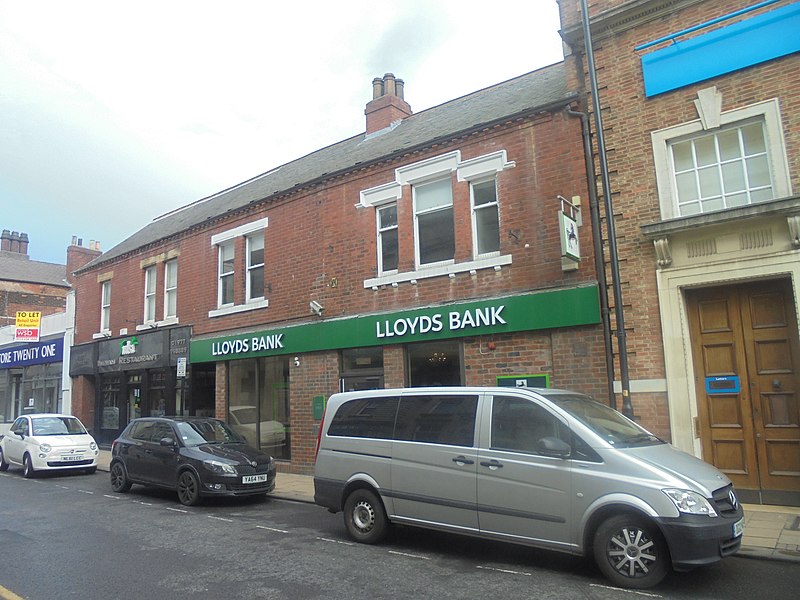
- One year on from the pandemic, Lloyds Bank has looked at how people in the UK spent their money during the pandemic
- Shift towards online payments coincided with people spending 1km closer to home; ATM and branch withdrawals down 33%
- Panic buying caused supermarket spend to surge 47% in March; now up 22% against pre-pandemic levels
Gabby Collins, Head of Payments at Lloyds Bank, said: “The pandemic has fundamentally changed where and how we have spent our money over the last 12 months.
“One of the most visible effects of non-essential shops, pubs and restaurants being closed is the huge shift to online. Businesses have adapted to meet consumer demand, meaning over half of all spending is now online, up from just 38% in the months before. When we have shopped in store, it’s been 1km closer to home in a boost to local high streets.
“Looking ahead, as the vaccine continues to be rolled out across the UK, those businesses who have welcomed few, if any, visitors will be willing a smooth opening by June. We know that demand is there; spending on holidays alone spiked 109% on the announcement of the government’s roadmap out of lockdown.
“We’ll have to see whether online spending behaviours set in once people are given the opportunity to visit their favourite places again. We think we could see a spending spree, when people are reunited with friends and family.”
Huge shift to online and contactless payments as consumers adapt to new norm
Debit card data from Lloyds Bank has found that as the UK approaches one year living with Covid-19 restrictions, 55% of customers’ money was spent online by the end of February 2021, compared to 38% in February 2020.
For those who continue to spend away from their homes, the median distance travelled has reduced by 1.2km over the course of the pandemic, from 3.9km to 2.7km. When using their debit card, roughly 79% of all transactions are now by contactless payment, up from 68% in the February before the first lockdown. In response to the pandemic, the contactless limit was raised from £30 to £45 from 1 April.
Similarly, the amount withdrawn from ATMs on debit cards has also fallen dramatically since lockdown, down a third (33%) compared to the year before.
Panic buying led to huge surge in supermarket spend
As we’ve spent more time in our homes, supermarket spending on essentials has soared above pre-pandemic levels, up 22%. However, despite a huge shift to supermarket delivery services just 5% of transactions were online, only a slight increase on the year before (4%)
Panic buying as the UK announced its first lockdown initially caused supermarket spending to surge. Spending the week ending 22nd March 2020 jumped 47% compared to the same week the year before, and was only 9% lower than the week leading up to Christmas.
Restaurants enjoyed their best month during Eat Out to Help Out
Unable to visit restaurants for large periods over the past year, consumers have spent 26% less in restaurants during the pandemic compared to the year before. However, the adaptability of businesses to move to online orders meant that during the pandemic, 26% of all restaurant transactions have been online, compared to just 9% before.
The Eat Out to Help Out scheme provided a boost to restaurants, which had seen spending fall 76% in the first week of lockdown compared to the same week in 2019. By the last week in August, restaurant spend was up a third on the same week in 2019, and it was also this week which saw the most amount spent at restaurants in 2020.
Hope for gigs and theatres to reopen after cultural fans limited in 2020
Some of the UK’s favourite cultural past times were also heavily restricted by the pandemic, with gigs and theatre performances cancelled for live audiences from March 2020. Since then, spending fell 38% compared with the same period before lockdown.
However, more recent news of the Government’s intention to slowly open up the UK in the coming months proved a welcome boost, with spending on cultural activities up 227% the week after the announcement was made.
Similarly, spending on holidays enjoyed a very recent surge in spending across the same period, up 109% . However, spending on holidays over the last year remains 69% down compared to the amount spent before the pandemic.
Workers have stayed at home, as spending on the commute remains extremely low
By the week ending April 12th 2020, spending on the commute was 89% down on the same week in 2019, demonstrating just how sharp the decline in commuting became with the Government’s request to work from home where possible.
While that guidance has remained in place for the majority of 2020, the overall impact since March 2020 has not been quite so severe. Overall, commute spending is almost two thirds down (59%) compared to the year before the pandemic.
Consumers put money to their home
Being at home may have influenced more people to deck out their homes as makeshift offices. People have been flocking to home stores over the pandemic, with spending up 19% in the last year.






